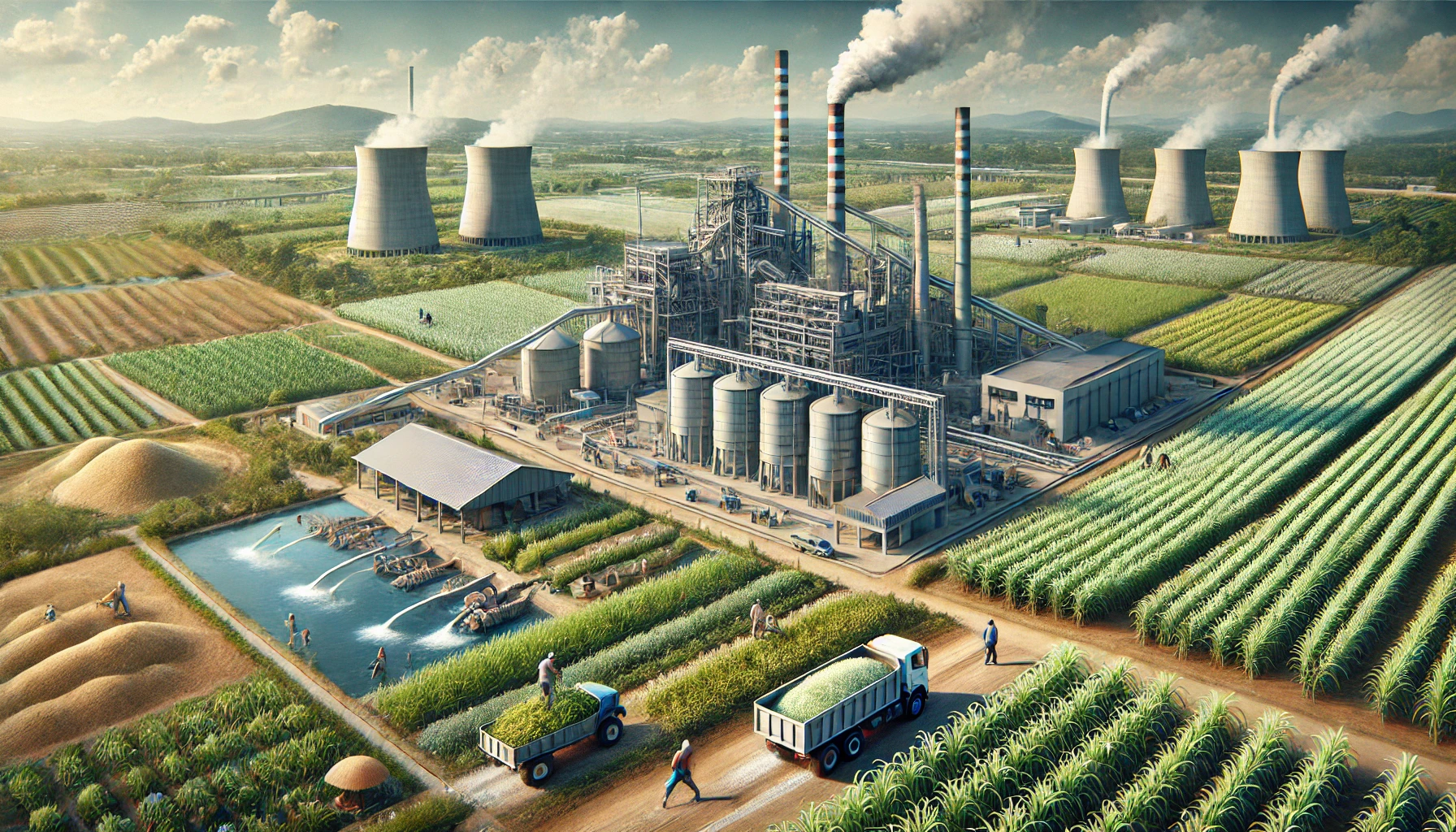1. Overview of the Project
The Kantale Sugar Factory has been dormant since 1993. Its revival under a public-private partnership, involving the Sri Lankan government and MG Sugars Lanka, marks a strategic investment in sustainable development. The project, valued at $300 million, aims to modernize the facility with advanced technology to achieve profitability while supporting local agriculture and reducing import dependencies.
2. Sugar Production Potential
- Annual Target: 80,000 tonnes of sugar.
- Local Demand: Sri Lanka consumes approximately 400,000 tonnes annually, with significant reliance on imports.
- Economic Impact: The factory’s output will reduce sugar imports, saving an estimated $50 million in foreign exchange yearly.
- Revenue Potential: Based on prevailing sugar prices, the annual revenue from sugar sales alone is projected at $40–50 million.
3. Biomass Power Generation
- Capacity: 27.5 MW, with 10 MW supplied to the national grid.
- Energy Source: Utilizes sugarcane waste, promoting a circular economy.
- Renewable Energy Impact: Reduces dependency on fossil fuels and aligns with global sustainability goals.
- Revenue Stream: Electricity sales to the grid offer an additional stable income stream.
4. Ethanol Production
- Target Market: Domestic industries, including beverage and fuel sectors.
- Strategic Importance: Contributes to energy independence and reduces import reliance.
- Projected Income: Ethanol sales add significant value, especially with global demand trends.
5. Modern Agricultural Practices
- Support for Farmers: The project involves 3,000 farming families, expanding sugarcane cultivation.
- Irrigation Technology: Implementation of advanced drip irrigation ensures optimal water use.
- Land Utilization: Potential for expansion to new cultivation areas, increasing yield efficiency.
6. Economic and Social Benefits
- Employment Generation:
- 3,500 direct jobs in factory operations.
- Thousands of indirect jobs in logistics, services, and supply chain.
- Community Development: Revitalization of the region through infrastructure upgrades and consistent income for farming families.
- Import Reduction: Substantial foreign exchange savings by producing sugar and ethanol locally.
7. Financial Structure
- Initial Investment: $300 million.
- Breakdown:
- Modernization of sugar processing facilities.
- Construction of the biomass power plant.
- Expansion of agricultural infrastructure.
- Revenue Streams:
- Sugar sales: $40–50 million annually.
- Electricity sales: $10–15 million annually.
- Ethanol sales: Potentially $5–10 million annually, depending on market demand.
- Payback Period: Estimated at 6–8 years, with increasing profitability due to growing local demand and reduced import costs.
8. Sustainability and Strategic Goals
- Environmental Impact:
- Reduction in carbon footprint through renewable energy generation.
- Sustainable farming practices contributing to soil health and biodiversity.
- Alignment with National Goals:
- Enhances self-sufficiency in sugar and energy sectors.
- Supports the government’s renewable energy and rural development initiatives.
9. Risks and Mitigation
- Political Stability: Government backing and private-sector involvement reduce risks.
- Market Fluctuations: Diversified revenue streams from sugar, energy, and ethanol provide stability.
- Operational Challenges: Use of advanced technology and training programs ensures efficiency.
Conclusion:
The Kantale Sugar Factory revival project is a high-impact investment with significant returns across agriculture, energy, and industrial production. The project’s alignment with national economic priorities, combined with its sustainability focus, makes it a compelling opportunity for investors seeking financial returns and social impact.

No responses yet